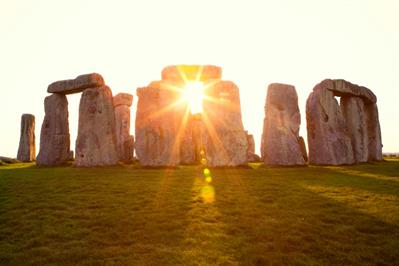
If you dwell north of the equator, June 21st is the longest day of the year. Known as the summer solstice, this occurs when the sun is over the Tropic of Cancer. Here are some fun facts about the summer solstice.
1. What is the summer solstice?
Between March and September, the northern hemisphere receives more exposure to the sun. This means the darkest months are in the winter and the winter solstice is on December 21, 22 or 23.
2. How many hours of sunlight?
The further north you travel, the more sunlight you’ll have during the solstice. For example, if you live near the Arctic Circle, you’ll have 24 hours of daylight so the sun won’t really set. If you live in South Carolina, you’ll see approximately 14 to 14-1/2 hours of sunlight!
3. Is this the latest sunset for 2018?
Oddly enough, just because June 21 is the longest day of the year doesn’t mean it’s the latest sunset. In Charleston, the latest sunset is June 29 and June 30 with the sun setting at 8:31 PM.
4. Why is Stonehenge a big deal for the summer solstice?
Shrouded in mystery and speculation, no one really knows why Stonehenge was erected more than 5,000 years ago. Some speculation is that it was built to celebrate and mark solstices. During the summer solstice, scientists note that the sun rises over Stonehenge’s Heel Stone and then hits its Altar Stone dead center. Coincidence? Probably not. That’s why so many people make the trek to gather at Stonehenge each year to witness this amazing site.
5. What is the Earth’s longest day?
Once the Earth had oceans and a moon, the rotation began to slow – something to do with tidal friction. For example, about 4.5 billion years ago, the Earth completed one rotation in a mere six hours. 350 million years ago this was extended to 23 hours, and now we’re at 24 hours. Scientists have now determined that the longest day in the Earth’s history was likely back in 1912.
6. Does the solstice mean there’s an eclipse?
Not necessarily. However, there are a few upcoming solar eclipses that are going to be pretty cool.
- July 13 – Partial Solar Eclipse – This will largely be viewable down under in between Australia and Antarctica.
- July 27 – Total Lunar Eclipse – This will be best viewed in Europe, Asia, Africa and Australia.
- August 11 – Partial Solar Eclipse – Best viewed from the coast of Siberia
Unfortunately, unless you’re traveling to exotic lands this summer, you’ll need to wait for another solar eclipse.
